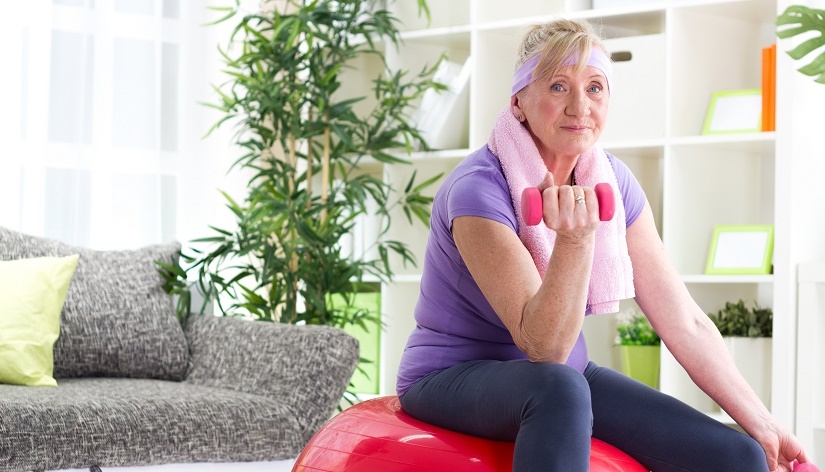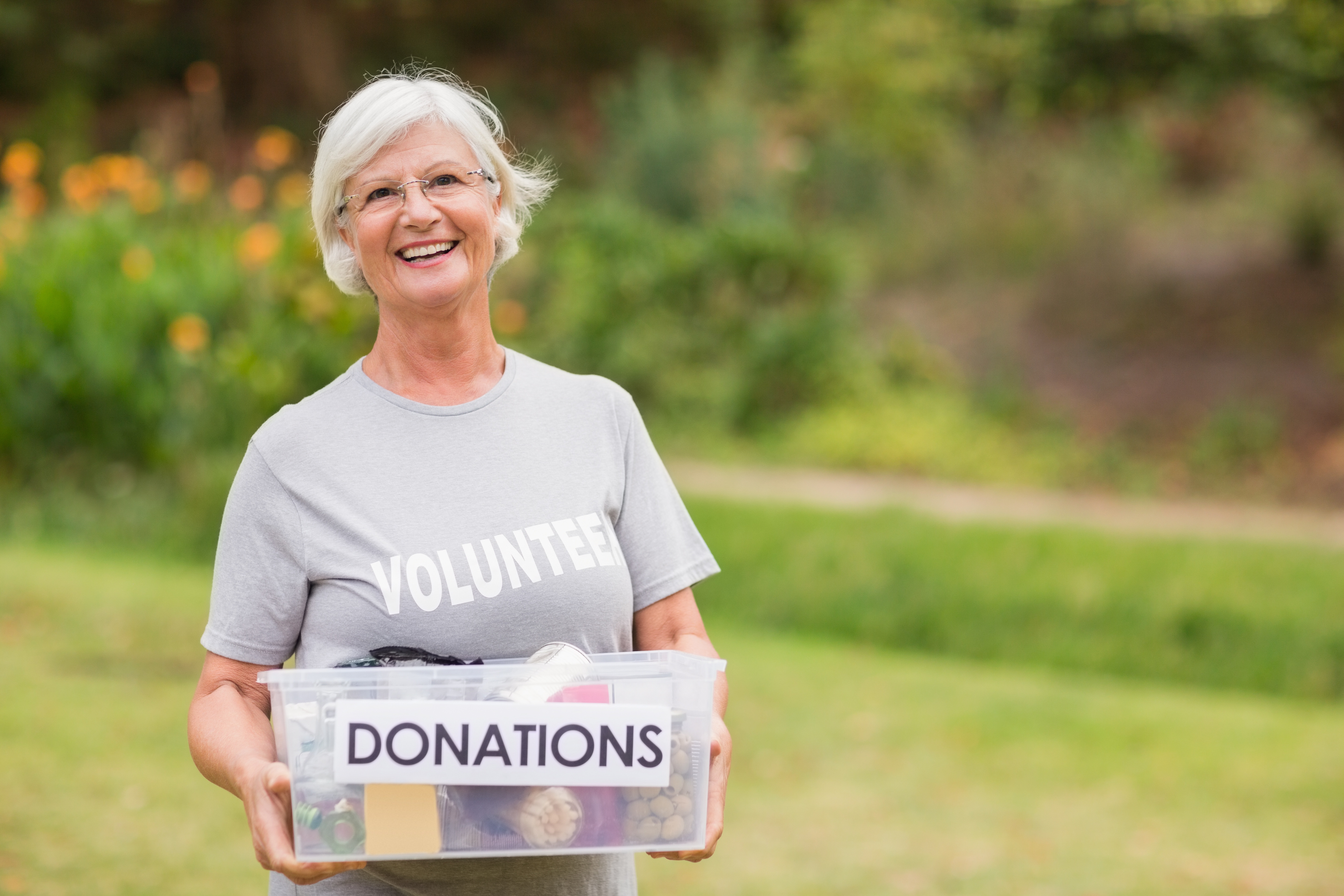Balance is essential for seniors. Without it, a fall or a strain could lead to a painful disability, or worse! That is why David Jacobs and his team at Level 3 Fitness in Denver, Colorado focus on healing, mobility and strength. With this specialized approach and over 20 years of working with seniors, Level 3 has helped thousands of people maintain or improve their overall health and ability.
Below is a written synopsis of the most recent video (above) which David recorded with Senior Directory. To start improving your balance immediately, do a few repetitions of the exercises below a couple times a day. Begin with once in the morning, before you get moving. Then repeat the exercises at night sometime before going to bed.
Exercise #1 – Feet and a Tennis Ball
The foot is the sensory organ which touches the ground, telling us where we are in space. It senses the ground, accommodates for different surfaces, then produces force for us to move.
This exercise is done one foot at a time, using a tennis ball placed on the ground. It is very important to stand up tall and straight while doing this exercise. You do not want to be slouching, bent over or looking down.
Place the tennis ball on the ground at your feet. While standing, gently roll the middle of the bottom of your foot over the ball. Then gently roll the outside and inside bottom of your foot over the ball, adding weight and pressure as comfort allows. Then leave some pressure on the ball, while it is stationary under the middle area of your foot.
Next, while the ball is under the middle of your foot, contract and then extend your toes. Our toes need to be woken up, as they are mashed together – asleep, you might say – inside of our shoes for many hours of the day. While gently doing the ball exercises under one foot, the bulk of our weight and balance is being supported by the opposite leg.
You will probably find some areas of the soles of your feet sensitive at first, but the sensitivity will decrease with repetition. If you are not comfortable standing while doing this exercise, you can do them while sitting on a chair. If you can, place your hands or forearms on your knees, for added weight and benefit to your feet.
Exercise #2 – Three-dimensional Awareness and Exercise
The second exercise addresses moving within three dimensions. We live in a three-dimensional world comprised of height, length and width. Our joints and muscles also have those three-dimensional aspects to them. This is an exercise, done while standing, to improve our balance and set us up for success in every environment. As with the tennis ball, feel free to stand near a counter top, doorway or chair for security. There are three parts to this exercise:
Part One – With your feet comfortably beneath your hips, and as much as possible avoiding curling your back, gently and slowly bend over and touch your toes, or get as close as you can. This is not a competition! Then gently and slowly rise up and extend your arms straight above your head. Stay in your comfortable range of motion. There is nothing to prove! Picture yourself grasping a small box which is on the floor, and raising it up high.
Part Two – Gently move your hips side to side. While displacing your weight to your left hip, your right hip moves to the right. Raise your right arm above your head, and lower your left arm down your left leg. Do the same, but reversed, as you transfer your weight to your left hip. Your head and vision and ears are moving as you lean first to one side and then to the other.
This challenges the vestibular system, which is responsible for the sensory organization in our heads. It feeds our brain information about the position of our head and our orientation to the space we are in. Just as our toes need to be awake when we walk, our brains need to be awake when we move. This helps keep our balance, move normally, maintain equilibrium and maintain good posture. Make your movements slow and relaxed. Breathe deeply and do not hold your breath. As with most of life, things work best when we are mindful of being slow and relaxed.
The side to side movement of this second balance exercise allows our feet to have a firmer grasp of the ground. It helps us when we lean our body over sideways to scratch our leg, pick up a bag, or ruffle the hair of a small grandchild. Practicing this exercise also extends our range of motion and strength as we bend to the side and then get back upright. Doing this regularly will also help us avoid toppling over.
Part Three – Extend your arms in front of you a bit, with hands open. Gently and slowly twist to the right as if you are handing something to another person. Then twist to the left. Your hips are turning as you do this, and your knees and feet are helping to change your position.
During this exercise, our ears (vestibular system) and eyes (visual system) are both engaged and giving our brains new information while we stand our ground. Standing our ground is a strength exercise for stability, so that we do not fall over when we do not want to. Never underestimate the power of waking up the brain by feeding it with new information.
Exercise #3 – Conglomeration of Exercises #1 and #2
We need stronger feet to hold us on the ground while we move around in our three-dimensional world. Our inner ears and our eyes need to be able to move around when we are not at the safe neutral spot we stood in during Exercises #1 and #2.
We are going to get into a Walking Position. The purpose of this is to check, strengthen and ensure that we are stable when we’re walking. We do not want to be left hoping that we have the strength and balance to keep us from falling. For security, you can be next to a chair or countertop, both of which work well.
Take a small step forward. Not a big step, but a small one, perhaps just putting one foot ahead so that the heel of that foot is just in front of the toes of the other foot. There are three parts to this exercise:
Part One – Put your hands on your hips and while keeping your back as straight as possible, gently lean forward. Then gently lean backward, allowing your pelvis to rotate forward and backward.
Part Two – Gently lean side to side, keeping your feet firmly grounded. Be mindful of keeping your weight in the same plane as your legs and hips. Reach out your hands as you lean to each side, like you’re tossing something into a waste basket. Looking to each side, as you lean, will challenge your vestibular (ears) and oculomotor (eyes) systems. This allows your feet, ears and eyes to let you know where you are in space, so your body and mind are familiar with their surroundings and falls are avoided.
Part Three – Still standing with one foot forward, arms relaxed and yet bent at 90 degrees, slowly rotate from left to right. Turn your body slowly, and if you feel unsteady, just touch the counter or chair next to you. Turn your head and look in the direction that you are rotating. If you get wobbly, just touch the chair or counter and regain your feel of being steady.
If you do not feel steady turning and looking in the direction of the turn, that’s o.k. Find a spot in front of you, about 10 feet away, and focus your eyes on that spot. Then slowly rotate to left and right. Move your hands and hips across you, paying attention to them as you rotate. You will benefit from practicing this exercise after sitting or lying down for any length of time. It helps you feel grounded and strengthened before you begin to walk about.
Practicing all of these exercises daily will help a person to feel more secure and confident about their balance. Over time, and with practice and repetition, the benefits of these seemingly simple and yet highly worthwhile exercise routines, will be beyond measure. We live in a three-dimensional world in which the laws of gravity are immutable.
We do not have to live a sedentary lifestyle as we get older, fearful of taking a fall. We have the option to strengthen ourselves and increase our security in being a balanced person as we age. Be mindful of posture. Go gently and slowly in these balance exercises.
One last note to keep at the forefront of your mind while doing your exercises and developing your balance… the definition of ‘balance’ is an even distribution of weight enabling someone to remain upright and steady.
Good Luck! And please count on Level 3 Fitness for any questions, comments, or further health and fitness needs as you progress. Have a healthy day!
Aaron Ainbinder is the author of “Just Before the Stroke of Seven”.


Comments